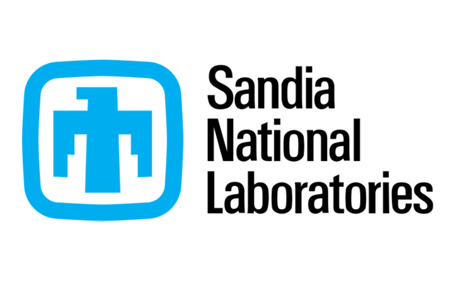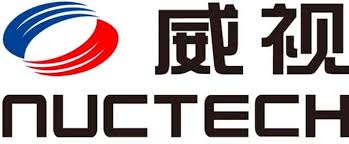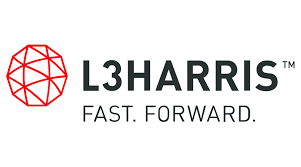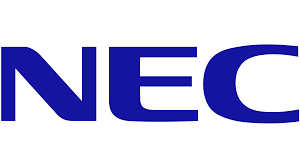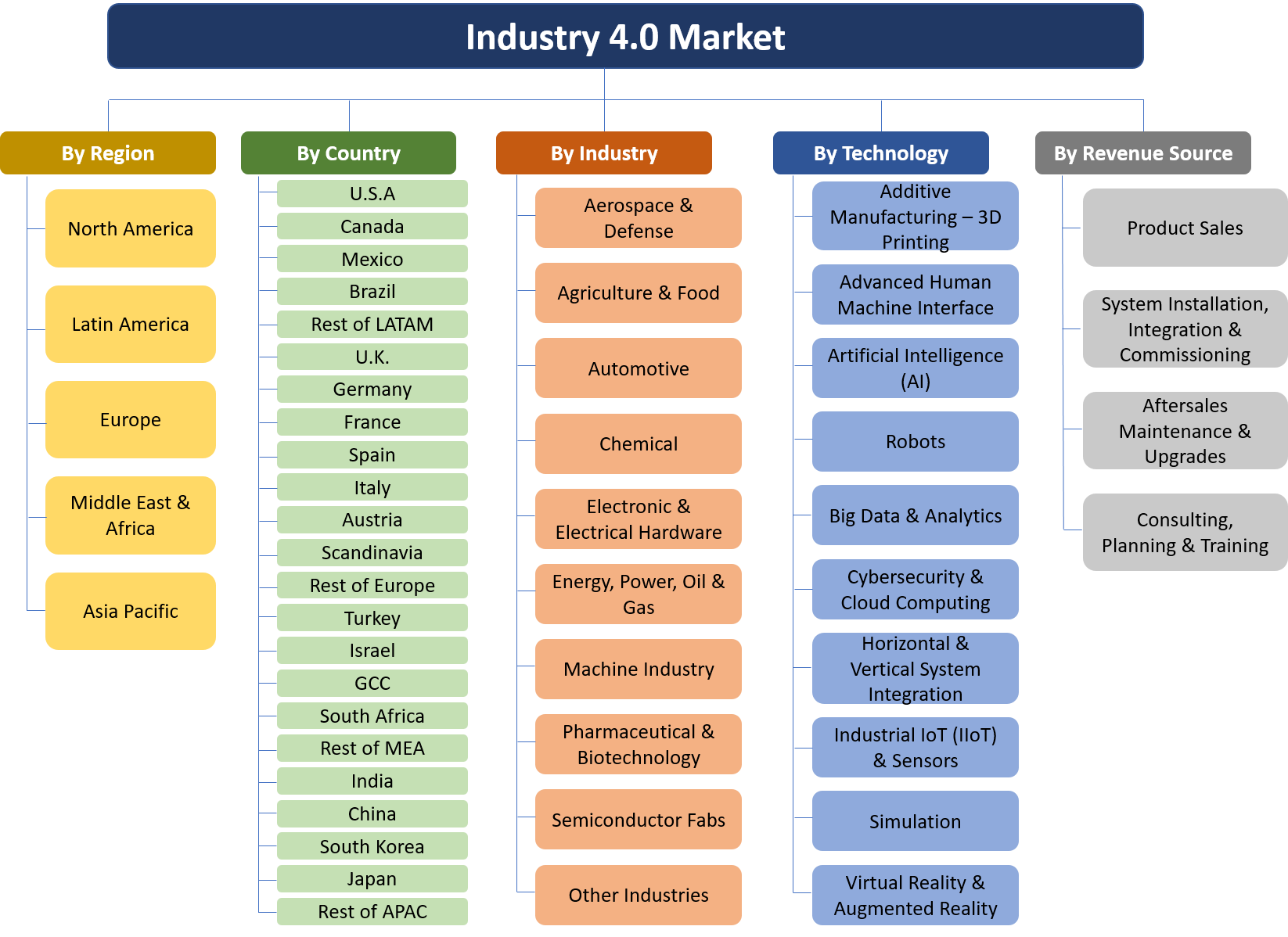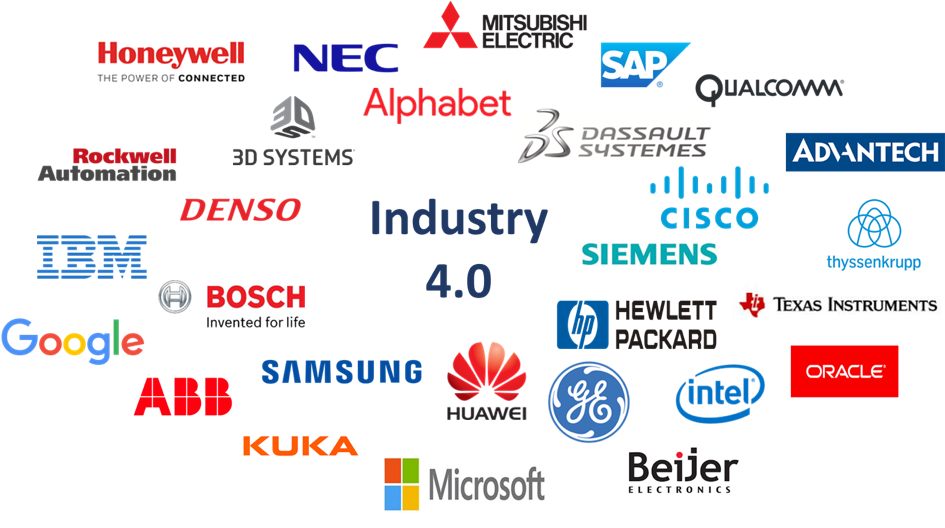Description
Industry 4.0 is here to stay, there is no doubt about that. The “Industry 4.0 Market & Technologies – 2018-2023” report forecasts that the global Industry 4.0 market** will reach $214B by 2023, 30% larger than the projected 2023 Cybersecurity market size (see Figure 1).
Why Buy This Report?
- No Risk. We Provide a Money-Back Guarantee* – with our money-back guarantee, you can find out for yourself how valuable the report is for your business – an unprecedented offer in the market research industry.
- This report is the most comprehensive review of this market available today – it is based on thousands of sources as shown below:

*NA: Not Available
Table 1 – HSRC Industry 4.0 Research Sources & Contents
HSRC research methodology was based on the following research activities:
- 31 Industry 4.0 round table focus groups with 87 leading industry executives from 17 countries
- 79 face-to-face interviews with industry 4.0 executives
- Meta-research*** based on >4000 industry responders in 27 countries and over 2000 companies
- Review of 477 reports and papers
- 49 Industry 4.0 vendors research
- Cross-check of 188 submarkets via 5 bottom-up research vectors (see Figure 2)
The Industry 4.0 transformation will change long-held dynamics in commerce and global economic balance of power.

Figure 1 – Global Industry 4.0 Market Vs. Global Cybersecurity Market Size (2016, 2023) |
In the next decades, businesses will establish global networks that incorporate their machinery, warehousing systems and production facilities in the shape of cyber-physical systems. In the manufacturing environment, these cyber-physical systems comprise smart machines, storage systems and production facilities capable of autonomously exchanging information, triggering actions and controlling each other independently. On the one hand, these changes add to the traditional business pressure on manufacturers, but on the other hand also offer unprecedented opportunities to optimize the production and manufacturing processes.
Industry 4.0 facilitates fundamental improvements in the industrial processes involved in manufacturing, engineering, material purchasing and usage, supply chain and life cycle management, predictive maintenance and real-time management overview. The smart factories that have already appeared across most industries employ a completely novel approach to production. Smart products are uniquely identifiable, they can be located at all times, know their own history, current status and alternative routes to achieving their target state. The embedded manufacturing systems are vertically networked with business processes within factories and enterprises and horizontally connected to dispersed value networks that can be managed in real time from the moment an order is placed right through to outbound logistics. In addition, they both enable and require end-to-end engineering across the entire value chain.
Figure 2 – Industry 4.0 Report 188 Submarkets Granulation Vectors
Industry 4.0 holds immense potential. Smart factories allow individual customer requirements to be met, meaning that even one-off items can be manufactured profitably. In Industry 4.0, dynamic business and engineering processes enable last-minute changes to production and deliver the ability to respond flexibly to disruptions and failures on behalf of suppliers.
End-to-end transparency is provided over the manufacturing process, facilitating optimized decision-making. Industry 4.0 will also result in new ways of creating value and novel business models. It will provide start-ups and SMEs with the opportunity to develop and provide downstream services.
The Industry 4.0 competition is not only about technology or offering the best products; it is also, and in particular, about the companies that gather the appropriate data, combine them to provide the best digital services, and in addition, utilize the data for their own benefit. Those who know what the customer wants, and can forecast consumer demand, will provide the information to develop an unfair competitive advantage.
The major winners might be those that control Industry 4.0 Platforms , software layers that syndicate various devices, information and services, on top of which other firms can build their own offerings.
The Industry 4.0 market race is led by the global tech giants (see Figure 3) that invest billions of dollars in Industry 4.0 products R&D, M&A, commercialization and internal use.
Figure 3 – Tech Giants Participating in the Industry 4.0 Market Race
The transformation of the economy being brought about by Industry 4.0 means that business processes such as supply, manufacturing, maintenance, delivery and customer service will all be connected via the Industrial IoT systems. These extremely flexible value networks will require new forms of collaboration between companies, both nationally and globally.
To maintain their industrial base and create new jobs, governments across the globe invest billions of dollars in Industry 4.0 projects and R&D, and provide subsidies and tax incentives for Industry 4.0 investors.
On the one hand, governments and private sectors of countries with high labor costs (e.g., EU countries and the U.S.) invest in Industry 4.0 to increase their industrial sector, which has been taken over by low labor cost countries (see Figure 4); and on the other hand, low labor costs industries and their governments (e.g., China, India and Cambodia) react to this trend by investing in Industry 4.0 as well.
Figure 4 – Manufacturing Sector Share [%] of GDP by Key Countries
HSRC forecasts that the market will undergo a major transformation in 2018-2023 via the following drivers:
- Fast growing market, expected to reach $1 Trillion by the early 2030s
- Global competition in the manufacturing sector is becoming fiercer and fiercer
- Unprecedented opportunities to optimize production processes
- Governments and the private sector of high labor costs economies invest in Industry 4.0 to increase their industrial base taken by low labor cost countries
- The private sector and governments of low labor costs economies invest in Industry 4.0 to maintain their industrial base taken by high labor cost countries Industry 4.0 investments
- Government-funded Industry 4.0 projects, R&D, subsidies and tax incentives
- Industry 4.0 offers start-ups and SMEs the opportunity to develop and provide downstream services
- Industry 4.0 dynamic business and engineering processes enable last-minute changes to production and deliver the ability to respond flexibly to disruptions and failures on behalf of suppliers and customers
- End-to-end transparency provided over the manufacturing process, facilitating optimized decision-making
- Industry 4.0 provides the link to the consumer, and can forecast consumer demand
The report is aimed at:
- Industry 4.0 Products Vendors
- Industry 4.0 Systems Integrators
- Government Industry Agencies
- Startups and R&D Managers
- Manufacturing Companies, SME included
The report has been explicitly customized for the industry and government decision-makers, to enable them to identify business opportunities, emerging technologies, market trends and risks, as well as to benchmark business plans.
Questions answered in this 640-page 4-volume market report include:
- What was the 188 Industry 4.0 submarkets size and what were the trends during 2016 & 2017?
- What is the 2018-2023 forecast for each of the 188 submarkets?
- Which industries and technologies provide attractive business opportunities?
- What drives the Industry 4.0 managers to purchase solutions and services?
- What are the technology & services trends?
- What are the market SWOT (Strengths, Weaknesses, Opportunities and Threats)?
With 640 pages, 120 tables and 150 figures, this 4-volume report covers 10 industries, 10 technologies, 4 revenue sources, 5 regional and 22 national markets, offering for each of them 2016-2017 estimates and 2018-2023 forecasts and analyses.
Why Buy This Report?
A. This is the most comprehensive information source of the global Industry 4.0 market and technologies available today
B. Market data is analyzed via 5 key perspectives:
With a highly fragmented Industry 4.0 market we address the money trail via the following 5 bottom-up market size vectors:
- By Industries:
|
|
- By Industry 4.0 Technologies:
|
|
- By 4 Revenue Sources:
- Product Sales
- System Installation, Integration & Commissioning
- Aftersale Maintenance, Upgrades & Spare Parts
- Consulting, Planning & Training
- By 5 Regions:
-
- North America
- Latin America
- Europe
- Middle East and Africa
- Asia-Pacific
- By 22 Countries:
|
|
C. Detailed market analysis framework is provided:
- Market drivers & inhibitors
- Business opportunities
- SWOT analysis
- Barriers to new entry, supplier power, buyer power and competitive rivalry
- Business environment
- The 2016-2023 market segmented by 188 submarkets
- More than 1000 references and links to Industry 4.0 data sources & publications
D. The report includes the following appendices:
- Appendix A: Industry 4.0 Smart Maintenance
- Appendix B: How to Convert an Industry 2.0 or Industry 3.0 Business to Industry 4.0
- Appendix C: Abbreviations
- Appendix D: Terminology
- Appendix E: Research Sources & Bibliography
E. Industry 4.0 market report addresses 13 technologies:
- Additive Manufacturing- 3D Printing
- Advanced Human Machine Interface
- Artificial Intelligence
- Industrial Robots
- Big Data & Analytics
- Cybersecurity
- Cloud Computing
- Horizontal and Vertical System Integration
- Industrial IoT (IIoT)
- Sensors
- Simulation
- Virtual Reality
- Augmented Reality
F. The report presents extensive information on 49 leading companies (including companies profile, Industry 4.0 activities & products, and recent events), namely:
| 3D Systems ABB Ltd. Advantech Aibrain Alphabet Arcadia Data Arm Ltd. Beijer Electronics Bosch Cisco CyberX Dassault Syst?mes DENSO EOS ExOne General Electric Honeywell |
Hewlett Packard Huawei IBM Intel Intelligent Automation Interset Software Kuka Magic Leap Microsoft Mitsubishi Electric NEC NGRAIN Oculus VR Oracle QUALCOMM Rethink Robotics Rockwell Automation |
Samsung SAP Sensory Siemens SIGFOX Splunk Sri International Stratasys Texas Instruments TRUMPF u-blox Wittenstein Worldsensing SL Xerafy Xjet |
NOTES:
(*) Industry 4.0 Report “Money-Back Guarantee” Program: Terms & Conditions
- To qualify for the money-back guarantee program send an email with your contact information to: sales@homelandsecurityresearch.com
- HSRC will inform the customer of his/her eligibility for the program ASAP.
- Qualified customers are required to pay the full list price of the report, and a copy of the report will be dispatched to them ASAP.
- Customers wishing to implement the money-back-guarantee policy, must notify HSRC via e-mail (sales@homelandsecurityresearch.com), within 48 hours of receipt of the report that they request a refund. The customer will have to erase and destroy any copy of the report and inform sales@homelandsecurityresearch.com that it has been done.
- The customer has 48 hours of receipt of the report to fully comply with Clause (4).
- HSRC would appreciate receiving customer’s honest review of the report and the reason(s) it didn’t meet his/her needs/expectations.
- Upon receipt of the e-mail as detailed in Clause (4), HSRC will issue within 3 working days a refund instruction (minus $300 for shipping and handling).
- HSRC reserves the right to decide that a company doesn’t qualify for this promotion at HSRC’s own discretion
(**) “Market” Definition. Industry 4.0 turnkey systems sale, aftersales maintenance & upgrades and outsourced services such as consulting, planning & training
(***) The Meta-Research is based on the statistics of 11 Industry 4.0 surveys conducted by HSRC, BCG, PwC, Deloitte, Roland Berger, Rittal, Siemens and The Economist Intelligence Unit, totaling >4000 responders.




